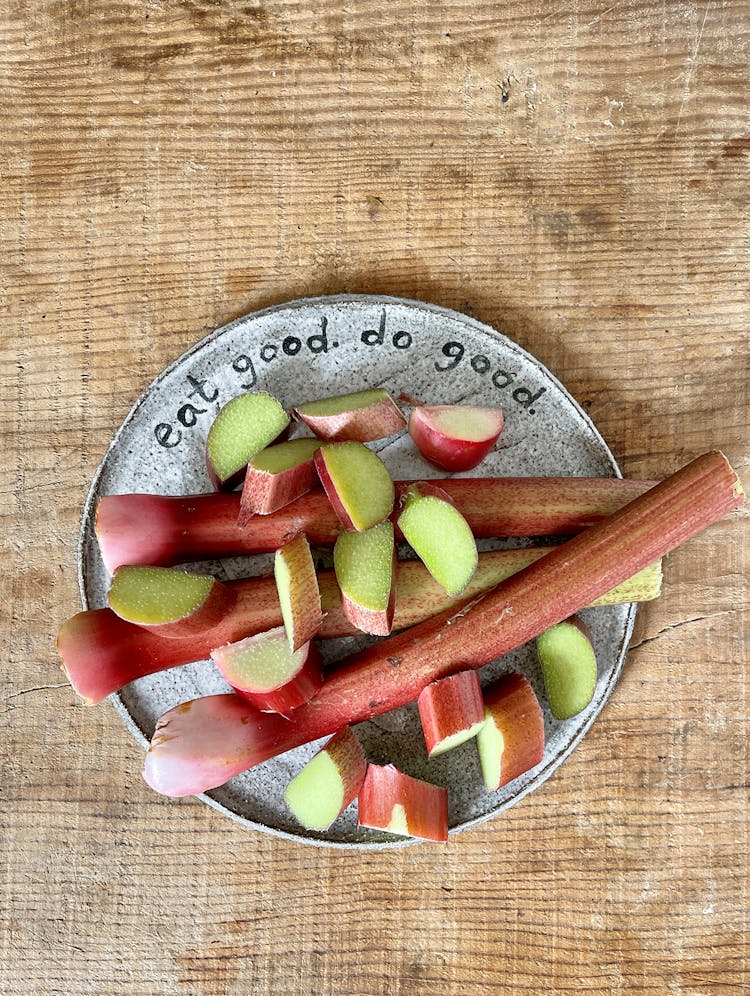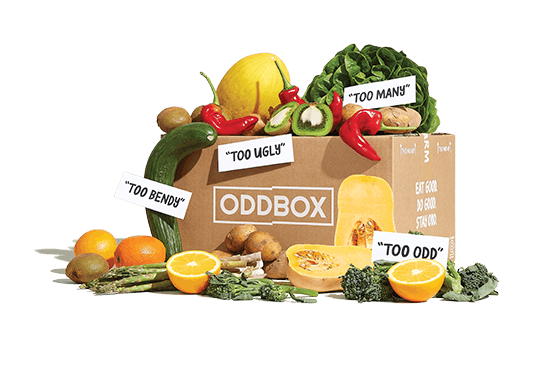6 delicious ways to use rhubarb
Rhubarb is an unusual looking vegetable, most closely related to sorrel and dock – two leafy green plants whose leaves can often be eaten. It has thick, fleshy stalks and large leaves.

Rhubarb stalks range in colour from deep pink to pale green and they’re stringy, like celery. Rhubarb recipes in the UK and North America often add the stalks to pies, crumbles, cocktails, jams and other rhubarb desserts. In Asia, rhubarb roots are usually dried and used in traditional Chinese medicine.
What does rhubarb taste like?
Rhubarb has a sour flavour that isn’t to everyone’s taste. Because of its tartness, this vegetable is rarely eaten raw. Instead, often, the stalks are boiled down with plenty of sugar.
Rhubarb also carries a slight sweetness, which is unusual for a vegetable. Rhubarb pairs well with ginger and strawberries, and makes up half of an iconic British duo – rhubarb and custard.
When are rhubarbs in season?
Rhubarb has two seasons – forced and maincrop. Forced rhubarb is “forced” out of its winter hibernation with warmth and darkness. It’s ready for harvest by March latest. It has a more delicate flavour, pink stalks and pale, lime-green leaves.
Maincrop rhubarb, which is grown in the natural spring light and warmth, arrives from late April into June. It has bright green leaves and stalks that are a deeper red tinged with green. The flavour is sourer and more intense.
Can you eat rhubarb leaves?
Rhubarb leaves contain two chemicals which make them toxic to both humans and pets. They should not be eaten, so cut them off when preparing rhubarb to cook and wash your hands afterwards.
But there’s no need to throw away your rhubarb leaves just yet. Use them around the home and garden – just take a look at our guide on what to do with rhubarb leaves.
Easy rhubarb recipes
Rhubarb puddings and rhubarb savoury recipes are both equally delicious. Here are our favourite ideas for what to make with rhubarb.
Stewed rhubarb
Wash 500g rhubarb stalks and cut them into 5cm pieces. Add them to a medium saucepan along with the juice and zest of 1 orange, 70g demerara sugar and your choice of flavourings. Some ideas are freshly grated ginger, cinnamon, vanilla or star anise.
Cook on medium heat for 5-10 mins, stirring occasionally, until tender. Adjust the cooking time depending on the consistency you want – chunks that hold their shape or a mushy texture?
This rhubarb compote can be used as a topping on pancakes, porridge, granola, ice cream or countless other rhubarb dessert recipes.
(via Jo’s Kitchen Larder)
Rhubarb and ginger jam
Cut 400g rhubarb stalks into 2.5 cm pieces. Place the rhubarb and a 4 cm piece of ginger in a bowl, then pour 400g sugar over them. Cover and leave overnight.
Sterilise jam jars using these instructions. Transfer the mixture to a large pan and simmer gently until the sugar has dissolved. This will prevent the jam from crystallising later on. Add 1-2 tbsp lemon juice and bring the jam to a rolling boil.
As the jam reduces its appearance will change, and eventually you’ll be able to test if it has reached setting point using a thermometer. Once the jam has reached 105 degrees C it should be ready. Turn the heat off and let the jam cool for 5 mins, then transfer to the sterilised jars. Seal the lids while the jam is still hot.
(via Fuss Free Flavours)
Rhubarb cordial
Roughly chop 500g rhubarb and put it in a pan with 225ml water. Bring it to a gentle simmer and cook for 15 mins, until the rhubarb is very soft. Mash it with the back of a spoon to release its juices. Leave to cool, then strain through a piece of muslin or straining bag. Squeeze to release as much juice as possible.
Measure out 375ml of the juice and 75g sugar. Pour them into the pan and heat gently, stirring regularly until the sugar dissolves. Stir in 1 tbsp lemon juice, taste and add more sugar if you prefer a sweeter cordial. Leave to cool.
(via Olive Magazine)
Vegan rhubarb crumble
Preheat the oven to 180 degrees C and roughly chop 250g rhubarb. Tip it into a glass oven dish, preferably clear. Add 50g brown sugar and ½ tsp finely chopped fresh rosemary, then mix well. In a separate high sided bowl, mix 100g ground almond, 50g oats and 50g coconut sugar. Mix well, preferably with your hands.
Pour the mixture on top of the rhubarb and pat it down. Bake for 30-40 mins until the rhubarb is soft and the top is browning. If the top is browning before the fruit has cooked, place foil on top and continue baking it.
(via The Vegan Chef School)
Rhubarb and strawberry risotto
Preheat the oven to 160 degrees C and lightly grease a large, shallow dish with coconut oil (or another oil). Using a pestle and mortar or a spice grinder, grind 4 cloves and 1 tsp juniper berries into a paste. Add 1 tsp ground cinnamon.
Mix 250g strawberries and rhubarb, cut them into slices and place them across the bottom of the dish. Cover with 200g risotto rice, 750ml almond milk, 75ml maple syrup and the ground spices. Pour a 400g tin of coconut milk into a bowl and whisk until smooth, then pour it into the dish with the rice and fruit. Stir everything and place 1 vanilla pod in the centre.
Bake in the oven for about 2 hours, until the rice has cooked through and pudding is set. Serve, removing the vanilla pod.
(via Sneaky Veg)
Vegan lemongrass and rhubarb fool
Crush 2 lemongrass stalks with a rolling pin. Put 75g coconut sugar in a pan and add 200ml water. Place on a medium heat, stirring until the sugar dissolves, then add the lemongrass stalks. Bring to a simmer and cook for 5 mins. Remove from the heat and leave until it cools to room temperature. Take out the lemongrass stalks.
Cut 300g rhubarb into 2-3 cm chunks, then add it to the pan. Place the pan back over a medium heat, then simmer gently for 5 mins. Remove from the heat, leaving to cool to room temperature.
Pour 175g coconut yoghurt into a mixing bowl and gently fold in half of the cooled rhubarb. To serve, divide the remaining rhubarb between four bowls. Then, spoon carefully the rhubarb and yoghurt mixture on top in each of the bowls. Top with the remaining yoghurt and sprinkle with 10g crushed pistachios.
(via Circus Gardener)

